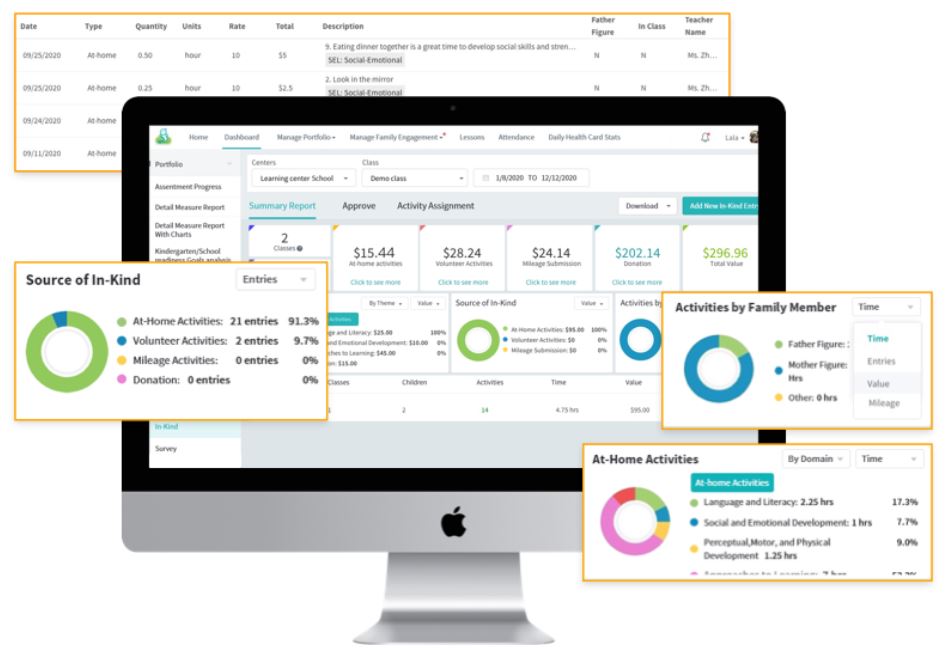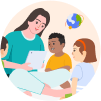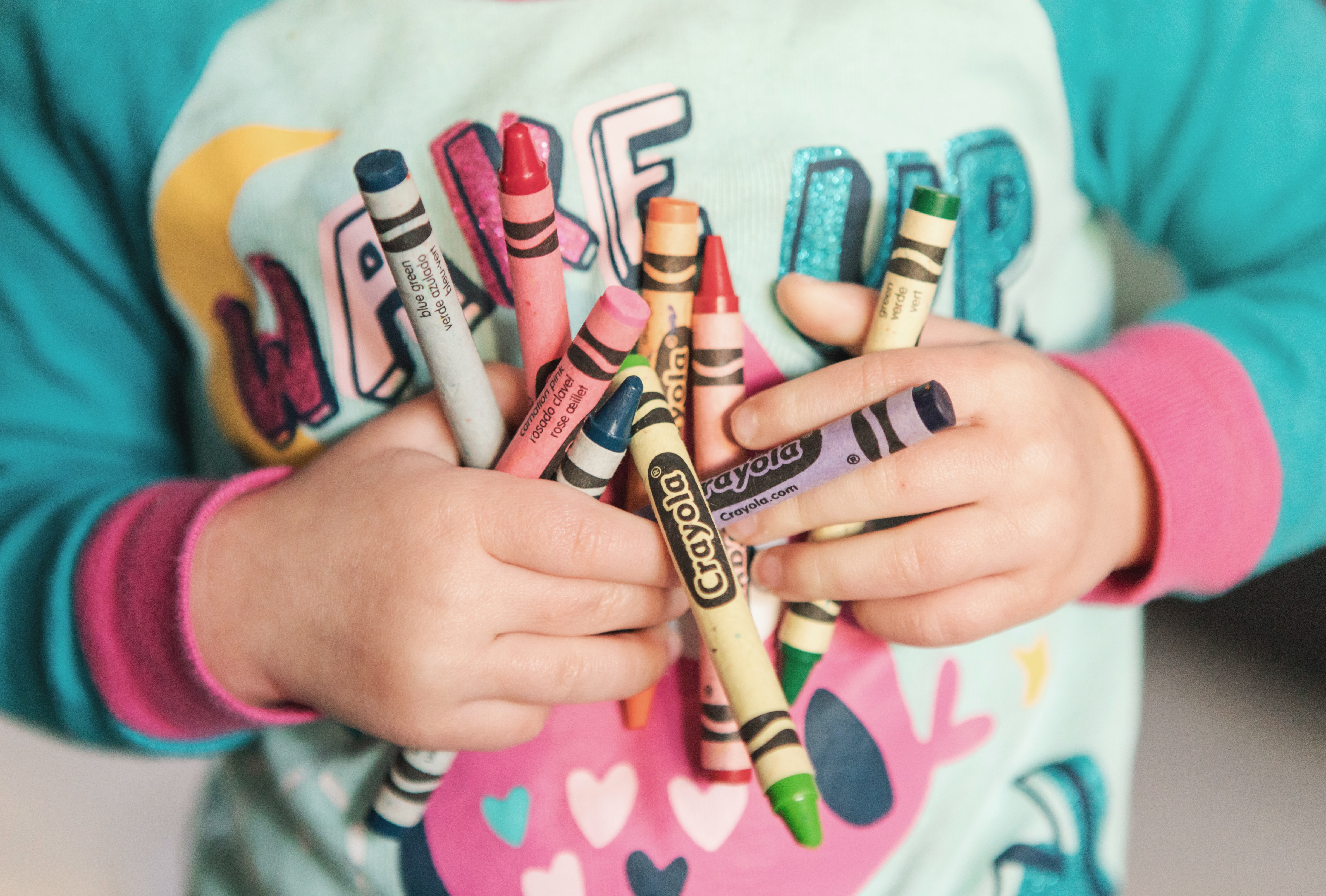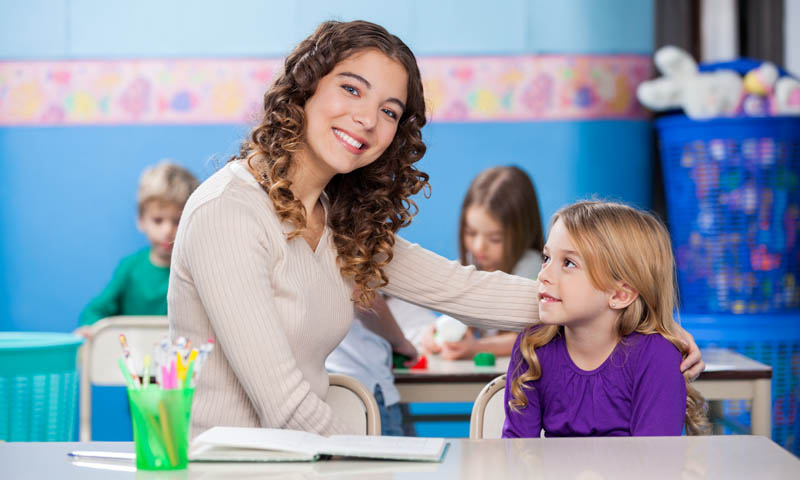DRDP 2015 Checklists with Learning Genie
In 2015, the state of California created the Desired Results Developmental Profile (DRDP) as part of their Desired Results system designed to help improve early childhood education services for children and families. The DRDP 2015 Checklists focuses on and measures progress in six areas deemed to be the “desired results” of early childhood educational programs:
- Children are competent both personally and socially
- Children can learn effectively
- Children demonstrate competence in physical ability and motor function
- Children are safe and healthy, both in and out of educational centers
- Families support the child’s learning and development milestones
- Families achieve personalized goals of the entire family unit
Keeping track of each DRDP for each child can be a hassle. For educators, making reports and observations while working can be difficult. And for parents, staying on the same page as teachers and privacy concerns for children can be a bother.
Learning Genie is here for all of those needs. Learning Genie is a portfolio system that keeps everything in one place. Learning Genie has apps for educators, centers, and parents and is available on the Apple App Store and Google Play for your iOS and Android devices.
Note: there is a separate Learning Genie app for parents, and parents need the parental code from the center to access their child’s profile. Links to Learning Genie for Parents can be found here.
For those that are new to DRDP and its inner workings, there can be a lot of unfamiliar and downright confusing words thrown about. A table of the common DRDP terms is provided here and can be used for reference.
| DRDP Terms | Definition |
| Developmental Domain | A domain is one of the eight major focuses of the DRDP, and each domain assesses and measures a different key component of a child’s learning and development |
| Measure | Each domain is broken down into multiple measures, and these measures evaluate a child’s behavior within that domain. Each measure also assesses where a child falls along a developmental continuum |
| Developmental Level | A child’s progress along the continuum is called the developmental level for a DRDP measure |
| DRDP Checklist | A form that monitors a child’s progress through a specific domain, measure, and developmental level |
When it comes to filling out the DRDP checklist, sometimes teachers and parents do not know where to start. And trying to stay organized can seem like a chore in and of itself. With Learning Genie, filing reports and organizing can be a breeze. With a user-friendly platform and a host of features, the suite of tools that are in Learning Genie can turn any DRDP checklist into an easy-to-manage guide for a child’s development and learning.
Educators and parents alike can monitor progress and create reports of a child’s development. Not to mention, Learning Genie is a secure system. Children’s and families’ privacy and protection are top priorities, which is why there are parental codes needed to access the app and its features.
DRDP 2015 Checklists
DRDP 2015 checklists pose an opportunity to monitor a child’s progress in domains and measurements as they progress through their early education.
By seeing what each child is successful with and what they are struggling with, parents, teachers, and educational centers can better tailor the support they can give so that every child can reach their desired results.
Each checklist in and of itself is unique, and tests different skills and abilities such as reading, walking, talking, and other developmental milestones. Each child could have multiple checklists as they grow older, and their goals become more unique.
With each child, there are hosts of unique DRDP 2015 checklists
—and with Learning Genie, there is one easy place to keep track of everything. Learning Genie is more cost-effective and efficient than paper reports, with an online platform and database for each child.

Image source: Learning Genie
A DRDP 2015 domain often has four developmental levels. When using the DRDP checklist, there is often room for these levels and to report a child’s progress in each area. These levels include:
- Responding
- Exploring
- Building
- Integrating
Each level applies to children at various ages. Some developmental levels are measured throughout a child’s life from infancy to kindergarten, where some are only measured at one end or the other.
But what does that all mean and measure? These levels vary depending on the measurement being used and follow children from early infancy to being kindergarten ready. Each level looks for different child actions that fit in with the domains.
| DRDP Developmental Level | Meaning |
| Responding (Earlier or Later) | Child displays knowledge or behaviors at a basic level, such as engaging in back-and-forth interactions with adults. At this level, children usually communicate nonverbally. |
| Exploring (Earlier, Middle, or Later) | Child explores actively, independently, and purposefully. For example, the child demonstrates the ability to manipulate objects and begin to cooperate with others. At this level, children grow in their ability to communicate verbally or in other conventional language forms. |
| Building (Earlier, Middle, or Later) | Child demonstrates an understanding of how people and objects relate in an environment, how things work, and how they can investigate ideas independently. At this level, children use language to express themselves and participate in group settings. |
| Integrating (Earlier) | Child connects and combines strategies in subtle ways and uses a variety of skills. At this level, children cooperate with others and can solve multi-step problems. |
There is a lot that goes into a DRDP checklist. And it can be hard to remember all of those terms and headings and the domains and levels. Much less remembering all of that multiplied by a classroom. That is where Learning Genie makes the difference, and comes with a lot of helpful tools.
DRDP 2015 Mini Measures
Learning Genie provides access to a variety of resources for educators and families to keep track of DRDP 2015 checklists and goals. One key resource is the DRDP Mini Measure—a pocket size and digestible tool for quick reference that both parents and educators can use. This can help provide a visual guide and help with goal attainment.
Goals can fall in one of eight developmental domains:
- Approaches to Learning-Self-Regulation: assesses two related abilities crucial to school success; skills like attention maintenance, curiosity, sharing, self-control, and perseverance are measured in this domain
- Social and Emotional Development: assesses interaction with others; this domain measures the extent of a child’s social-emotional understanding, relationships with others and adults, and the forms of play they engage in
- Language and Literacy Development: assesses communication and literacy in a child’s first language
- English Language Development: assesses the English communication skills of children whose first language is not English
- Cognition, Including Math and Science: assesses observation, exploration, and investigation done by the child; specifically focusing on understanding of concepts such as cause-and-effect relationships, spatial relationships, and measurement
- Physical Development-Health: assesses motor development (including fine motor skills) and personal care routines, nutrition, hygiene, and more
- History-Social Science: assesses understanding of social situations, group interactions, and relationships between individual and environment, including a sense of time and place
- Visual and Performing Arts: assesses children’s engagement in visual art, music, drama, and dance
These eight domains have their own DRDP checklist, to see how each child is developing in a certain area. Furthermore, each DRDP domain contains numerous measures. Measures can be one of four types:
- Full Continuum Measures spans the whole range and applies to children from early infancy all the way to kindergarten
- Earlier Development Measures are focused on early milestones and apply to children from early infancy through the early years of preschool
- Later Development Measures fall in a later range of milestone developments and apply to children from early preschool through entering kindergarten
- Conditional Measures apply only in certain circumstances (ex. the English-Language Development measures only apply if the child does not have a primarily English-speaking household)
All that information is packed onto one small card! DRDP Mini Measures can see how each goal aligns with DRDP domains—and when educators or parents are reporting progress, the Mini Measures can be a quick guide for filling out the report.
It can be difficult to keep track of everything in each domain and its measurement. Learning Genie makes it simple by having it all just a few easy taps away. Educators and parents alike can report progress on each checklist for each child. And with the intuitive interface of Learning Genie, there is no need to memorize all that information above–it is all right there on the platform!
DRDP 2015 Checklists for Families
Knowing about the day a child had sometimes needs to go more than ‘what did you do in school today?’, not to mention if the child can even talk! With Learning Genie, parents and families can stay in loop all the time. Whether it be communicating with teachers, seeing and making reports, or interacting with a child at home using the classroom materials, parents can stay engaged and supportive of their children and their education.
Learning Genie allows for two-way communication—meaning parents and teachers can communicate back and forth. This creates a great team for each child and their goals. Teachers can share how children are doing in school and families can share how children are doing at home.
Parents and families also receive real time updates about their child’s day, pictures, and a full summary at the end of the day of all the observational reports made for each child. There is also a reminder system, so parents can stay up to date with center deadlines and important events.
Learning Genie also has other benefits for parents, including:
- Complete privacy of your child’s records and reports
- Ability to share reports and pictures to extended family and friends
- Community of Learning Genie parents through our Facebook Group
There is also parental access to the learning media used in the child’s classroom. This includes videos, books, and songs that parents can use at home to help children reach their goals and prepare them for learning.
When parents and families are engaged in children’s learning both inside and outside the home, children have a foundational support network as they enter kindergarten. There is a reason for the goals of the DRDP to include families in two ways, because familial involvement is crucial to a child’s success in school.
Get the Learning Genie Parents app for your Android or iOS devices. To maintain privacy and security, parents and families will need the special parental code to access all the apps features and child’s records and reports.
DRDP Checklist for Educators
It can be tough to handle a classroom—especially with younger children. Between the schedules and making sure every child is safe and active, it can add up quickly without having time to measure how the child is reaching a goal. But no more!
With Learning Genie, teachers can view rosters and view or make observational reports for each child. Educators can simply add measurements with a click of a button to a child’s report—and can even add multiple children to the same measurement. The easy to use and quick interface can allow teachers to seamlessly add notes and DRDP measurements while still remaining focused on the day and the classroom.
Here is how Learning Genie changes the game for educators:
- Learning Genie’s interface lets teachers upload documentation and record observations for individual children or multiple kids at the click of a button
- The rating system housed in the app with DRDP descriptors allows for teachers to measure and note a child’s developmental level quickly
- Learning Gene’s DRDP app allows teachers to export observations, including any of your photos, in beautiful PDF reports that are emailed to parents
- The DRDP manual is accessible from the app, keeping educators organized and informed
- Learning Genie presents a DRDP dashboard that helps to keep track of progress
- The app integrates with DRDP Online so teachers can upload observations directly, saving valuable time
Learning Genie allows for educators and teachers to focus on the tasks at hand–or all twenty of them. And there is no need for paper trails as Learning Genie stays with the child throughout the DRDP and their early years until kindergarten.
As many educators know, sometimes building a relationship and rapport with parents can be tricky. Teachers love to spend time with other people’s kids, and a child’s milestones are theirs too. And many educators want to share that with parents but do not want to appear to overstep boundaries or do not know how to open the lines of communication.
Communicating with parents has never been easier. With Learning Genie, parents and teachers can work together and talk throughout the day. As children move about their day, teachers:
- Communicate developmental milestones
- Share pictures
- Discuss how children are reaching their desired results
- Send reminders
When educators and parents work together towards a common goal, everyone benefits! With Learning Genie, that is possible. With the open lines of communication, parents and educators can be on the same page regarding a child’s needs and support, every first step of the way.
Keeping track of each DRDP checklist is now better and more efficient than ever. Learning Genie provides a host of features like the one pictured below for educators to keep track and monitor progress for each child. With learning Genie, it is a few simple taps to entering a report for each domain, its measure, and its skill.

Image source: Learning Genie
Learning Genie also allows educators and teachers to communicate with each other. Whether a child needs more one-on-one assistance or transferring from other rooms as they progress, teachers can share observation notes and reports for each student. And this can be handy for when substitutes are needed, and they can keep track of student reports without being lost at sea.
It is also important to communicate with other Learning Genie educators. By joining the Learning Genie Facebook Group for educators, teachers and administrators alike can connect to share ideas, lesson plans, and an overall sense of community.
There are even Learning Genie Lesson Slides for Teachers, to help teachers and educators create DRDP aligning lesson guides, DRDP samples, along with a helpful Zoom recording for all your Learning Genie lesson guides. You can also request a Web Demo to help you as you navigate around Learning Genie.
Summing Up
Learning Genie is a guide for all DRDP portfolio needs, right at the touch of a button. Keeping track of every milestone and developmental record has never been more convenient, and can build relationships between parents, teachers, and children to create a success team like no other.
DRDP 2015 checklists can be a lot of work. Observing and documenting the range of skills for every child can be a real hassle, and not to mention time consuming. But with the right DRDP assessment tool, there is a way to save time, money, and energy. By using Learning Genie, educators, administrators, and parents can stay informed and organized through the DRDP process and get back to what matters most–the kids!





